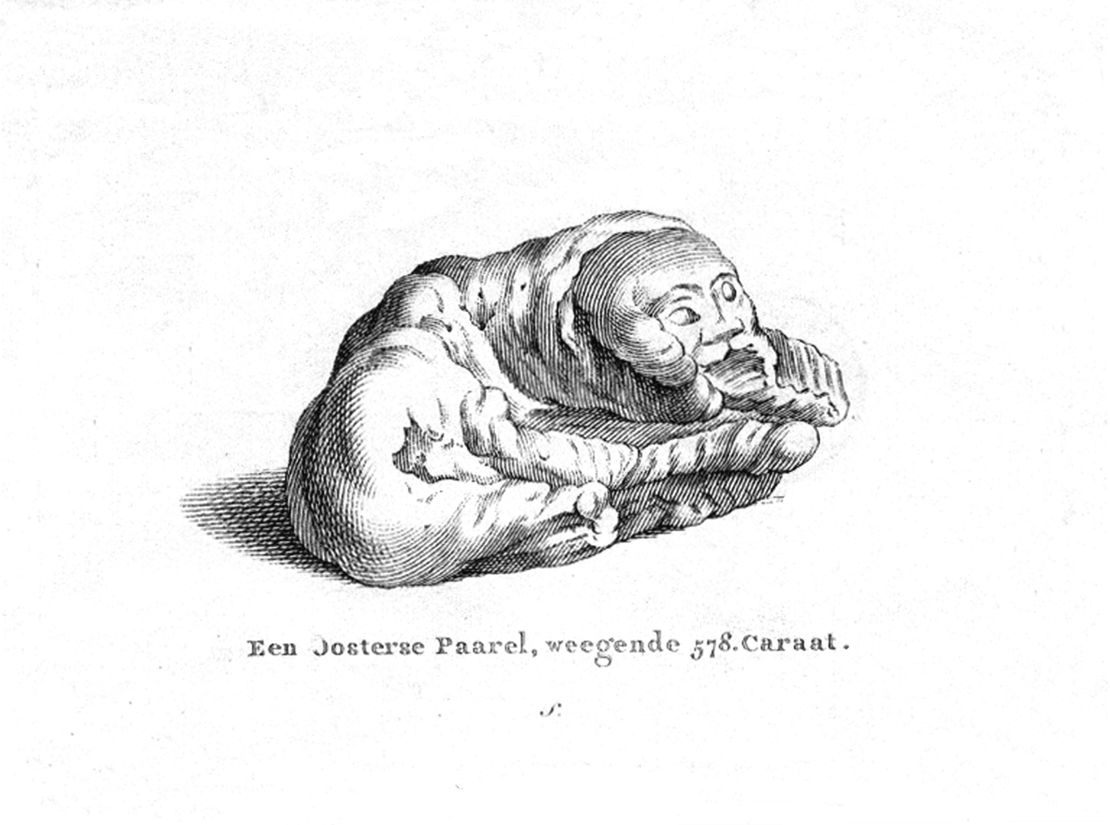The world’s largest known freshwater pearl is going on sale at a public auction in the Netherlands next week. Known as “The Sleeping Lion” due to its unique shape, the rare natural object weighs almost 120 grams (4 ounces) and is over 2.7 inches long.
Along with its size and animal-like appearance, the pearl is renowned for its approximately 300-year history, during which it changed hands between colonial merchants, noble jewelers and European royals, including Catherine the Great.
The Sleeping Lion will be sold at the Venduehuis auction house in The Hague on May 31, with top estimates valuing it at 540,000 euros ($632,000).
The pearl is of Chinese origin and is believed to have formed between 1700 and 1760, during the Qing dynasty, according to Venduehuis. Following its discovery, the Sleeping Lion was moved by Dutch merchants to Batavia, present-day Jakarta, before being shipped to Europe – a move believed to have violated the Chinese Emperor Qianlong’s ban on the export of large pearls.
The item was first auctioned in 1778 in Amsterdam following the death of its owner, a wealthy merchant from the Dutch East India Company. Advertised on the auction flyer as a “well-known royal cabinet piece, depicting a sleeping lion, created by nature itself,” the pearl was purchased on behalf of the Empress of Russia, Catherine the Great, and moved to St. Petersburg, according to the Venduehuis catalog.

The Sleeping Lion resurfaced in Poland in the mid-1800s and was bought by a jeweler working for Victor Emmanuel II, the first king of a united Italy. It was then held by several other European jewelers, only to settle back in the Netherlands when the Russian Revolution of 1917 prevented it from returning to St. Petersburg. In 1979, the pearl was bought by its current owner, the Amsterdam Pearl Society.
“What makes this object even more interesting is that it has traveled a long way since the 18th century,” Peter Meefout, director of Venduehuis, said by email.

In recent decades, the pearl has been the subject of studies by both historians and gemologists. A 2014 paper, published in the Journal of Gemology, found that while the object’s shape and remarkable size are highly irregular, its interior layering is consistent with naturally occurring freshwater pearls.
The auction lot includes a copper box built specifically for the pearl upon its discovery centuries ago. Both items will be on display this weekend, before being auctioned off for only the second time in nearly 240 years.
“The Sleeping Lion Pearl will probably not be on sale for the coming 200 years or so,” Meefout said. “It’s the last chance for the Dutch public to view this wonder of nature.”

